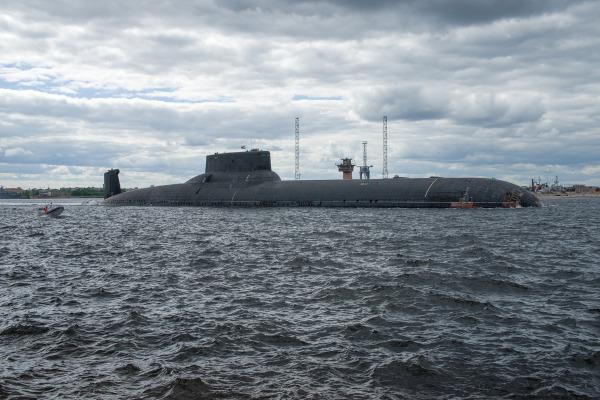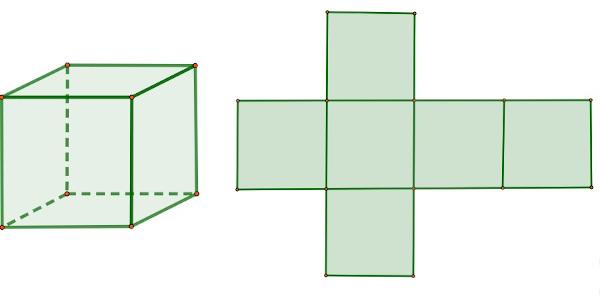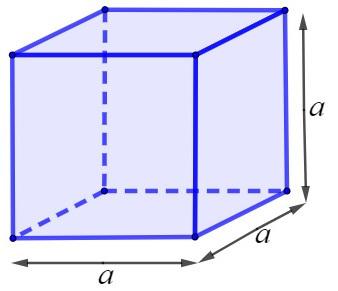You submarines are vessels that sail on the bottom of the sea, hidden from satellites. They are generally intended for military use, serving to attack and defend the country against hostile actions, in addition to guarding its coastal areas, but also are intended for civil use, serving for analyzes on the ocean floor, repair of oil platforms and investigation of submarine cables and pipelines.
Read too: Do you know how the ship floats in the sea?
Topics of this article
- 1 - Summary about submarine
- 2 - What is a submarine?
- 3 - Main parts of the submarine
- 4 - How does a submarine work?
- 5 - Types of submarine
- 6 - Are there submarines in Brazil?
- 7 - What is the largest submarine in the world?
- 8 - Origin of the submarine
- 9 - Curiosities about the submarine
summary about submarine
The submarine is a large vessel that can emerge or submerge causing an inequality between the weight force and the buoyancy force acting on it.
It consists mainly of batteries, hatch, electrical generators, oxygen generator, propeller, ballast, rudders, engine, periscope, sonar and sail.
It works by filling and emptying its ballast tanks, which change the weight force acting on it.
Submarines can be civil or military according to their purpose of use.
In 2008, the Submarine Development Program was created in Brazil, which has already launched two conventional submarines into the sea. and intends to launch two more of this category, in addition to launching the first Brazilian submarine armed with propulsion nuclear.
The largest submarines in the world that have ever been built belong to the Typhoon class, owned by Russia.
The submarine project was developed by the polymath Leonardo da Vinci, but the first navigable submarine was built in 1620 by inventor Cornelis Drebbel.
What is submarine?
Submarine is a vessel that moves secretly in the interior of the oceans with the main purpose of protecting the country and avoiding possible conflicts with enemies, due to its enormous military power. Despite the mainly military use, the submarine can also have civil use.
Main parts of the submarine
The main parts that make up the submarine are:
Batteries: power reserve in case of failure of electric generators.
Hatch: part that serves as the emergency exit of the submarine.
Electric generators: part that generates electrical energy for propulsion and for powering electronic equipment.
Oxygen generator: part that generates oxygen for the crew's breathing.
Propeller: part that transforms mechanical energy into propulsion.
Ballast: part that controls the submarine's density, allowing it to sink or submerge.
Rudders: parts that control the direction of the submarine.
Motor: part that makes the submarine move, through the transformation of electrical energy into mechanical energy.
Periscope: part that allows the crew to see obstacles out of their field of vision.
Sonar: part in charge of capturing the noises emitted by the bodies around the submarine in order to avoid collisions and identify its exact position.
Candle: part in charge of stabilizing the submarine and for the entry and exit of crew members.
Do not stop now... There's more after the publicity ;)
How does a submarine work?
the submarine emerges and immerses through the filling and emptying of its water reservoirs, called ballast tanks, which change the submerged volume of the submarine and unbalance the strength weight (force that "pulls" all bodies towards the center of the planet) and the buoyant force (force that moves bodies immersed in fluids upwards) that act on it.
In order for the submarine to immerse, it is necessary to open the valves that are in the upper part of the ballast tanks., which will make the air out and the water in, so the submarine will have more mass (and also volume) and, consequently, more weight.
For the submarine to surface, it is necessary to empty its ballast tanks., decreasing its mass and, consequently, its weight force.
types of submarine
Submarines are classified into military or civilian according to their function.
Military submarines: are those that have high length and power, are difficult to be located through satellites and can function under any weather condition. As a result, they are used as weapons platforms, defense and attack against enemies and patrolling coastal areas.
Civil submarines: are those with reduced length and lower power than military submarines. They serve for ocean floor studies, repair of oil rigs, verification of submarine cables and pipelines, and other uses.
Are there submarines in Brazil?
Although in smaller numbers than in most countries, there are some submarines in Brazil. Since 1914 Brazil has been acquiring submarines from other countries, but in 2008 the Prosub (Submarine Development Program) was created, through a partnership between Brazil and France, which aims to produce four conventional submarines and the first Brazilian submarine armed with propulsion nuclear.
In 2018, the first submarine created through Prosub, called the Riachuelo submarine, was launched into the sea. On December 7, 2020, the S Humaitá, also developed in this program, was launched to the sea for testing. The launch of the submarine S Tonelero is scheduled for 2023 and for 2024 the launch of the submarine S Angostura. And for 2033, the launch of the first Brazilian submarine armed with nuclear propulsion, named SN Álvaro Alberto, is scheduled.
What is the biggest submarine in the world?
The largest submarines in the world are of the Typhoon class (nomenclature given by NATO), developed by the Russian Navy (formerly the Soviet Navy).

Typhoon class submarines are military submarines made up of 20 ballistic missiles with nuclear warheads capable of reaching targets at distances of 10,000 km. They feature a length of 170 meters and a displacement of 48 thousand tons.
origin of the submarine
From the studies of Archimedes and other scholars on the buoyant force, the polymath Leonardo da Vinci (1452-1519) designed a submarine vessel that was never manufactured. In 1620, inventor Cornelis Drebbel (1572-1633) developed the first navigable submarine.
From that, several advances have been made regarding the operation of submarines. On April 16, 1863, the Plongeur submarine was the first to operate using a compressed air engine. On October 2, 1864, the submarine Ictíneo II was the first submarine launched that operated through a combustion engine (steam). In 1904, the Aigrette submarine was the first to operate using diesel-electric propulsion.
Facts about the submarine
The first submarines built operated through human propulsion.
Before World War II, submarines had torpedoes, cannons and machine guns on deck, as they needed to defend and attack when they surfaced.
Currently, submarines operate using diesel-electric or nuclear propulsion.
Submarines emerge or submerge by the same physical principle that allows ships not to sink, the action of weight force and thrust force.
Submarines navigate the oceans using nautical charts or technological navigation equipment, as light rarely reaches the bottom of the ocean.
Once on the surface, submarines navigate through the GPS, which tells you exactly your latitude and longitude.
Sources
HALLIDAY, David; RESNICK, Robert; WALKER, Jearl. Fundamentals of Physics: Gravitation, Waves and Thermodynamics (vol. 2). 10. ed. Rio de Janeiro, RJ: LTC, 2016.
MESQUITA, J. L. Meet the six largest submarines in the world. State, 2018. Available in: https://marsemfim.com.br/conheca-os-seis-maiores-submarinos-do-mundo/.
PROSUB. Brazil's navy. Available in: https://www.marinha.mil.br/programas-estrategicos/prosub.
By Pamella Raphaella Melo
Physics teacher
Would you like to reference this text in a school or academic work? Look:
MELO, Pamela Raphaella. "Submarine"; Brazil School. Available in: https://brasilescola.uol.com.br/fisica/submarino.htm. Accessed on June 21, 2023.
Click to understand how the ship floats in the sea. Also check out why the ship doesn't sink, five major shipwrecks in history and other curiosities.
Check out a detailed definition of buoyancy, learn about the buoyancy formula and Archimedes' principle. Learn more with the solved exercises on the topic.
How about learning a little more about hydrostatics? This important branch of Physics is concerned with studying the properties of fluids in static equilibrium.
Click here to find out how icebergs form. Understand the composition of these blocks of ice. See what are the main dangers offered by icebergs.
Do you know what specific mass is? Understand the difference between specific mass and density. Check out the formula used to calculate it. Learn more with exercises.
Do you know what atmospheric pressure is and what is its origin? Atmospheric pressure arises as a result of the large amount of atmospheric air above the earth's surface. It is defined from the intensity of the force exerted by the air masses for each square meter.
Cringe
The slang adapted from English is used to designate someone who is seen as tacky, shameful, outdated and out of fashion.
Neurodiversity
A term coined by Judy Singer, it is used to describe the wide variety of ways the human mind behaves.
PL of Fake News
Also known as PL2660, it is a bill that establishes mechanisms for the regulation of social networks in Brazil.
Click here, learn about the main parts of a submarine, find out how it works, find out which...



